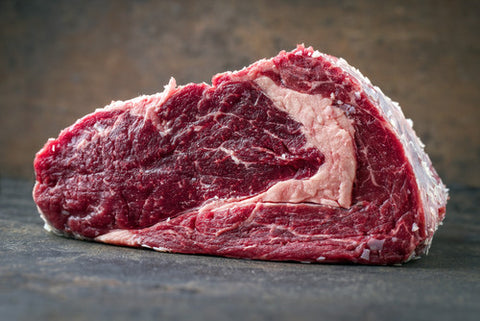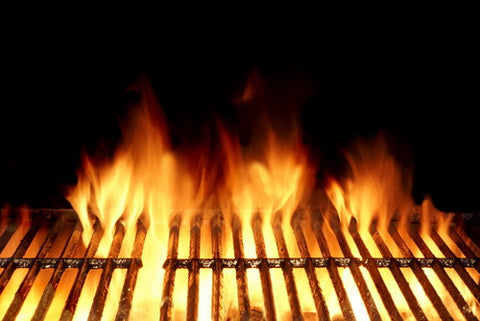When you think of summer cookouts and get-togethers, there’s nothing like imagining that perfect steak coming off the grill with those grill marks letting you know how delicious it’s going to be. It’s too bad that so many people are still confused about how to grill a steak. Grilling the perfect steak takes three basic steps. First, you have to get the right steak for the job. Secondly, you have to get your grill set up correctly. Lastly, you have to not only cook it to how you or your guest wants it, you have to let it rest.
Picking Out the Right Cut

The magic of the perfectly cooked steak starts with the right type of steak. And in the world of steaks, there are a lot of cuts to choose from. There are porterhouse, T-bone, tenderloins, rib eye, flank; the list is nearly endless. Here’s our suggestion.
If you’re grilling, avoid any cut of steak that has the word “round” or “chuck” in it. Those cuts require long cooking with slow heat to break down all the muscle fibers. If you want the cut that most butchers prefer, you can’t go wrong with a rib eye.
However, if you want a steak that will change how you view steaks forever, get a rib eye cap, or the deckle steak. This long cut has all the flavor of a ribeye and it’s as soft and buttery as a tenderloin steak. Caps are difficult to find unless you order them online from specialty stores or you are really great friends with your neighborhood butcher.
Whatever cut of meat you get, make sure that it’s at least an inch-thick. The sweet spot for cooking a steak is 1-1/2 inches thick, however. Look for Choice cuts. While most grading is arbitrary depending on the meat packer, there are USDA standards that must be adhered to.
Setting Up the Fire

Before you grill, make sure your steaks are at room temperature. Take them out of the fridge about a half-hour before you intend to grill them. Prep them by brushing both sides with oil and cracking some salt and pepper over each side.
One additional note: don’t trim the fat from your steaks. The exterior fat will help add flavor and keep the steak in shape while you grill it. If you prefer, you can trim your steaks after they come off the grill.
The ideal setup for grilling your steaks involves a two-zone cooking system with one side of your grill having direct heat and the other side having indirect heat. If you’re cooking with charcoal, this means you pile all the charcoal on one side. If you are cooking with gas, one set of burners will be on med-high and the other will be on low.
This allows you to get a great char on your steak and that grill flavor without turning your steaks into leather. As a rule of thumb, when cooking steaks that are 1-1/2 inch thick, you want to go by the 3-4 rule. That is, three minutes per side on direct heat, then four minutes per side on indirect heat. That will get your steaks to a beautiful pink medium-rare. Of course, if you prefer your steaks rare, you can cut that down to 2 minutes per side on indirect heat. The three minutes on direct heat on each side again gets you those grill marks and that crust that forms due to the Maillard reaction.
Use a good instant-read thermometer to check the internal temperature of your steaks to be certain of their doneness. For rare steaks, remove from the grill at 130 degrees Fahrenheit. For medium rare, remove at 140. For medium, 155, and for a well-done steak, take off the grill when it reaches 165.
Let Your Steak Rest and Relax

This is the last step, and potentially the most crucial. After being on the grill for 8 to 12 minutes, your steaks are stressing out. You need to let them relax so they won’t lose as much juice when you cut into them.
The science behind resting a steak is fairly simple. As you heat the steak, the cells contract and water is pushed out of them. As you let it rest, the cells reabsorb the moisture. As long as you’ve cooked your steaks correctly, the cells will recover and your steaks will be juicy and delicious.
The ideal time for a 1-1/2 inch steak to rest is 7 minutes. When you rest your steaks, make a little tent out of aluminum foil so they don’t cool down too much.
After your steaks have rested, trim them if you must. Then serve to your guests while they are still warm.
The secret behind cooking a great steak on the grill is that there really is no secret at all. As long as you pay attention to a few key things – grill temperature, the cut of your steaks, and resting - your steaks will be the talk of the barbecue.


